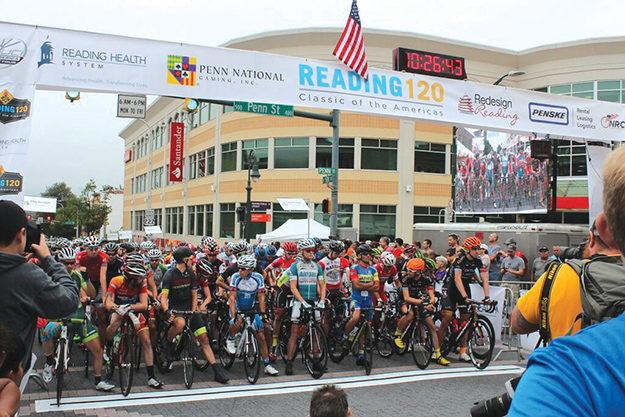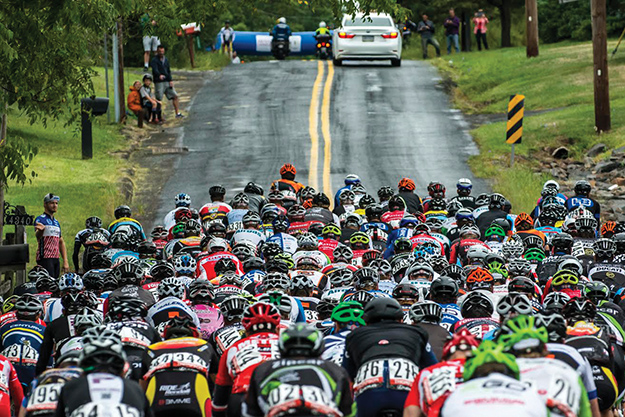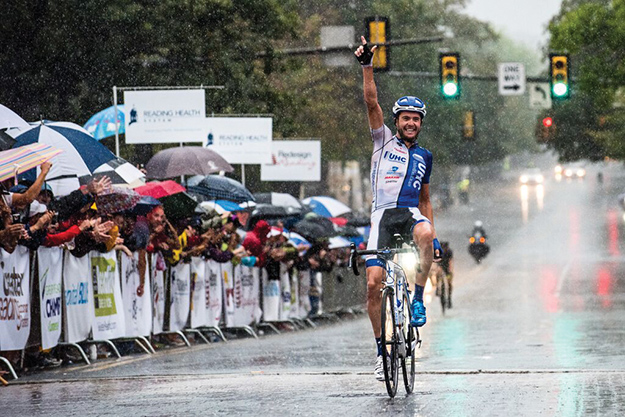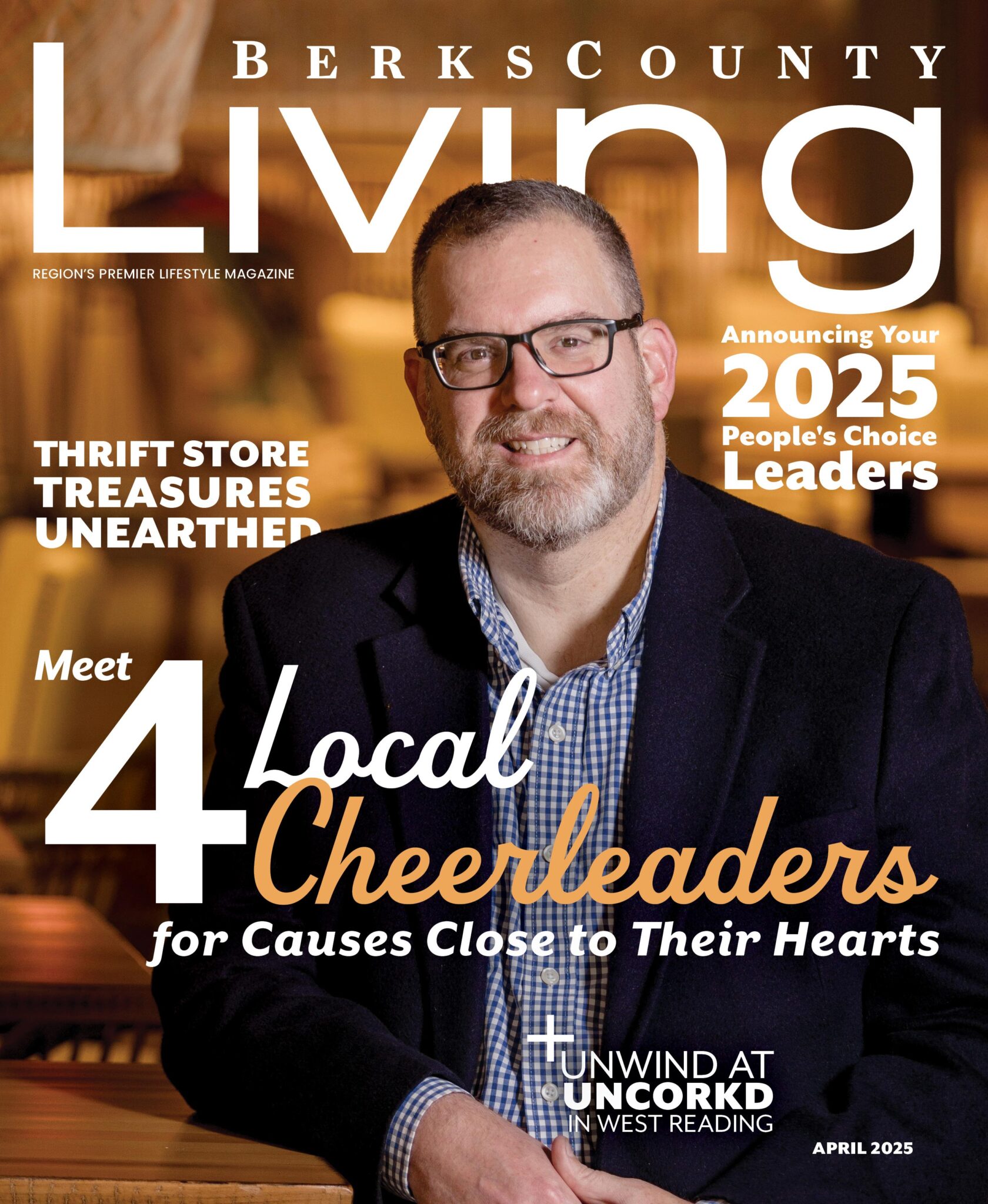
Every race has its starting line. When it comes to the Reading 120, you might point to three of those.
1. A street corner in Doylestown, Bucks County.
2. A bank-sponsored bike race that raised lots of enthusiasm and interest in the City of Reading and, Berks County a decade ago.
3. The long-ago half-mile race track in City Park, the myriad of bicycle aficionados and the pioneering bicycle manufacturers who put Reading on the map starting in the late 1800s.
The Reading 120, now in its second year, can trace its starting line, its history, to this trilogy. And as Saturday, Sept. 10, nears, the race, also known as the Classic of the Americas, is now past its original starting line and shaping its own story and identity.
It was back in 2014 that Craig Peiffer, cycling enthusiast and Reading zoning officer, checked out a two-day bike race in Doylestown. Peiffer struck up a conversation with a course marshal, saying he believed it would be great to have a similar race in his “new hometown.” The marshal asked where that was; Peiffer replied, and the marshal responded he was from Muhlenberg Township. Both agreed Reading was ripe for such an event. Ultimately, through that conversation and a note left with the marshal, some months later Peiffer received a call from John Eustice.
A critical call
Receiving a call from Eustice about cycling is akin to receiving a call from Harry Winston (were it possible) about diamonds.
Based in New York, Eustice, according to his TIME magazine contributor biography, was one of the first American-based cyclists to “break into the world of European pro cycling.” He both founded and captained the first American team to race in the Tour of Italy. He has twice been a U.S. pro champ. He continues to be a television analyst even as he serves as a race organizer.
And it is in the latter role that he contacted Peiffer.
Peiffer gathered a group of like-minded local cycling enthusiasts as well as community leaders – now known more formally as The Reading 120 Pro Bicycle Race Core Organizing Group or C.O.G. – to pull together, with Eustice’s expertise, a major professional bike race.
Of course, folks in Berks remember that downtown Reading and its environs were home to the Reading Classic from 2006 to 2008. But the ownership of Commerce Bank, the namesake sponsor, changed, and despite its popularity the race departed Reading.
For a few years, Reading became a bicycling desert, it seemed. The emphasis here is on “it seemed.”

And, they’re off…
Almost under the radar, things were happening in the local biking community.
The Berks County Bicycle Club was going strong with a number of scheduled rides and increasing membership. The Berks Area Mountain Biking Association (BAMBA) was becoming increasingly visible and working to improve the biking trails on Mount Penn and beyond.
And in downtown Reading, a place called The Bike Hub was established through the work of the City of Reading government and the nonprofit ReDesign Reading.
Despite the separate identities of the groups, there was a shared mission: capitalize on the biking opportunities in Greater Reading and, when possible, get everyone involved in biking. And, especially through The Bike Hub, that included the ever more diverse, youthful, and, yes, economically challenged urban populace.
Dave Kline, to whom one could ascribe multiple titles including Reading Eagle Company Executive Director of Circulation and Promotions and President of WEEU Radio, is a C.O.G. member and devoted cyclist who appreciates the full circle of cycling in Berks.
Kline waxes nostalgic during an interview about a time in Reading no one alive has ever known – the first local heyday of bicycle racing and manufacturing.
The bicycle capital of the world
The Penn Wheelmen bicycle club was organized in 1898 with 25 members. A year later, the club held a 21-mile race from Myerstown to Reading that attracted some of the biggest names in late 19th century cycling circles. In 1891, there were both track and road events, says Kline, and that race ended in City Park, also known as the Penn Common Fairground, at the then half-mile velodrome.
Other bicycle clubs were established too. And by the mid-1890s, according to Kline, Reading came to be known as the bicycle capital of the world. Indeed, in 1898 alone, half a dozen Reading companies manufactured 75,000 bicycles.
Enthusiasm grows
With enthused C.O.G. members like Kline and Peiffer, the race was on to create the Reading 120 within an almost unrealistic time frame of six months. Given the essential nod by city government and support by the county commissioners, sheriff’s department, and various municipal leaders and law enforcement professionals, C.O.G. pulled out all the stops to garner key sponsors. And with ReDesign Reading and the Masano Auto Group leading the sponsorship way, the race was literally on.
With the 2015 starting and finishing lines at Fifth and Penn streets, the cycling teams would wind their way 120 miles through the Berks countryside, including through much of the urban core, out to the rural areas of Oley and Maxatawny, back to Reading and through multiple grueling climbs at the race’s end up to the Pagoda via Duryea Drive.
By Saturday, Sept. 12, all was ready to go.

The skies open
And then, the rain came. Rain in sheets, rain that whipped sideways with the wind. And, it just didn’t stop.
But neither did the 175 racers (representing 21 nations), some of whom reveled in the added challenge, nor did the spectators who watched with soggy delight.
Eustice says the excitement of the race was relayed to the world by the work of a Colorado-based photographer whose team both rode the race and positioned themselves for the best shots of the inaugural Reading 120. One of those memorable moments occurred when Latvian Toms Skujins dramatically crashed on a Mount Penn curve. Some believe the crash may have impacted Skujins’ confidence on subsequent downhills, enabling Danny Summerhill of UnitedHealthcare Pro Cycling to win the race on a last-lap pullaway.
“He [the photographer] had a special team to stay with the bikes on the downhills,” says Eustice. “When Skulins fell, there was great TV, great excitement. This is a sport that no one else has, being on the edge of super-speeding 50 miles per hour downhill in the rain. You can’t replicate that; it’s a live sport that has few growth areas on television.”
The word gets out
Though not covered by any major sports channel or network, the 2015 Reading 120 was live streamed worldwide and more than 22,000 individuals in 122 countries watched the race, according to Peiffer and Kline.
ReDesign Reading officials have put together some noteworthy numbers (some are estimates) for the 2015 Reading 120.
Local businesses were believed to have benefited to the tune of $119,000 in additional revenue; there were 100 hotel reservations. The value of earned media (local and regional) amounted to $75,000.
The Greater Reading Convention and Visitors Bureau believes biking opportunities, informal or organized like the Reading 120, may be among the upcoming economic drivers for the area. Indeed, biking is front and center on the 2016 visitors’ guide.
Growing excitement
Kevin Murphy, president of the Berks County Community Foundation, agrees.
“The Reading 120 builds on the growing excitement about the bike culture in Berks County,” he says. “Projects like Reading Bike Hub, the recent designation of our trails system as a bronze-level ride center by the International Mountain Bicycling Association, and the 120 all serve to attract people from the New York and Philadelphia areas to our region.”
Lisa Haggerty of the Visitors Bureau believes room reservations will grow, particularly considering the new DoubleTree by Hilton Reading is the official hotel of the race. She believes the influence of business leaders like DoubleTree’s Craig Poole will go far to bring together various parties needed for the Reading 120’s success.

High energy
Jim McHale, Reading businessman and real estate agent, sees the race through the lens of an Ironman competitor. “Reading 120 is a world-class event. When you saw the big jumbotron and heard the announcer and saw the bikers flying through our city, you knew this was something special. It gave the whole downtown a new level of vibrancy,” he says.
He believes despite the rain of the 2015 event, business owners “recognized what this event will be.”
He also recalls the mistakes some downtown business owners, especially restaurateurs, made during the Commerce Bank races a decade ago. He says the ones who complained were the ones who failed to play to the ready crowds with something even as simple as a sandwich board offering a “race special.” “Businesses don’t need to work hard to get these consumers, but they need to do something,” says McHale.
He cited the importance of sponsorships for businesses and the multi-platform media visibility those invested dollars offer.
This year’s platinum-level sponsors, in addition to ReDesign Reading, are Reading Health System and Penn National Gaming. Penske comes in at the gold level and DoubleTree by Hilton Reading at silver. UCI America Tour, the City of Reading, and County of Berks round out the major sponsors. Reading Eagle Company, WEEU Radio, the Visitor’s Bureau, and Berks County Community Foundation are also on board.
Community spirit
Organizers are hoping Berks communities will pump up the spirit come race time. Kline says Reading Eagle Company will sponsor Community Spirit awards for the “craziest outfit,” the community that best welcomes racers, and the “craziest group of people” along the course. Each category winner receives $500.
Clearly, one of the communities in contention this year is Kutztown, where Kutztown University is celebrating its 150th anniversary. Reading 120 organizers have moved up the race to 9:30am so participants can pass through Kutztown prior to the parade commemorating the special KU anniversary.
So the course takes a more easterly turn, beginning and ending in City Park and winding twice through Mount Penn, Lower Alsace, and Oley, to Kutztown, and back to Reading on the open road. Following that are three laps through Reading and Lower Alsace featuring the grueling Duryea Drive with its seven switchbacks.
Taking it in
Peiffer advises spectators spend the morning and early afternoon in Reading City Park for the best view of the race. More energetic spectators can hike to one of the switchbacks for another unique view.
As the Reading 120 draws nearer, there is one shared hope: That Saturday, Sept. 10, will be a picture- perfect late summer day filled with sunshine and light breezes. “That would make for an epic race,” says Peiffer. “A group of cyclists I spoke with said it was one of their toughest and best races. One said it was ‘the baddest ass race’ he ridden in a while. ”
What’s not to like about that?
For full and up-to-date information on the Reading 120, visit reading120.com.
















